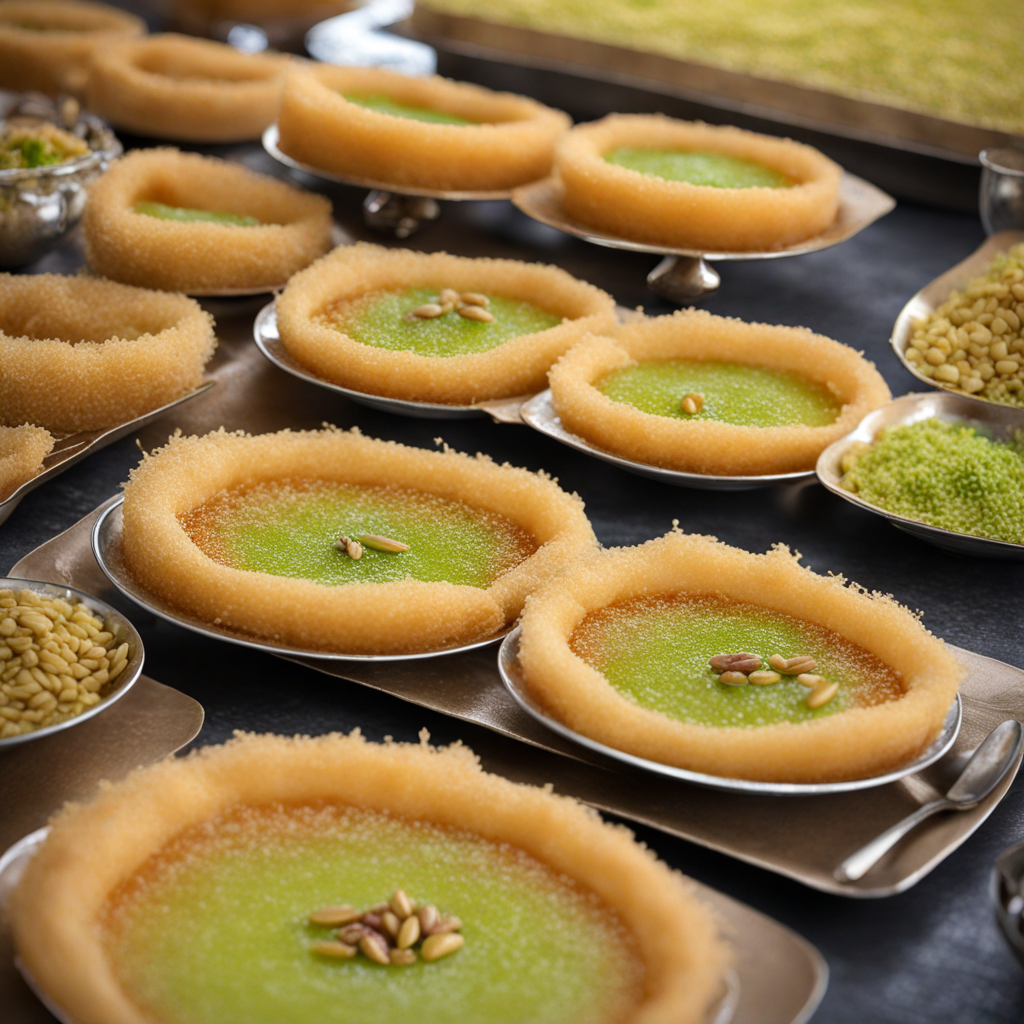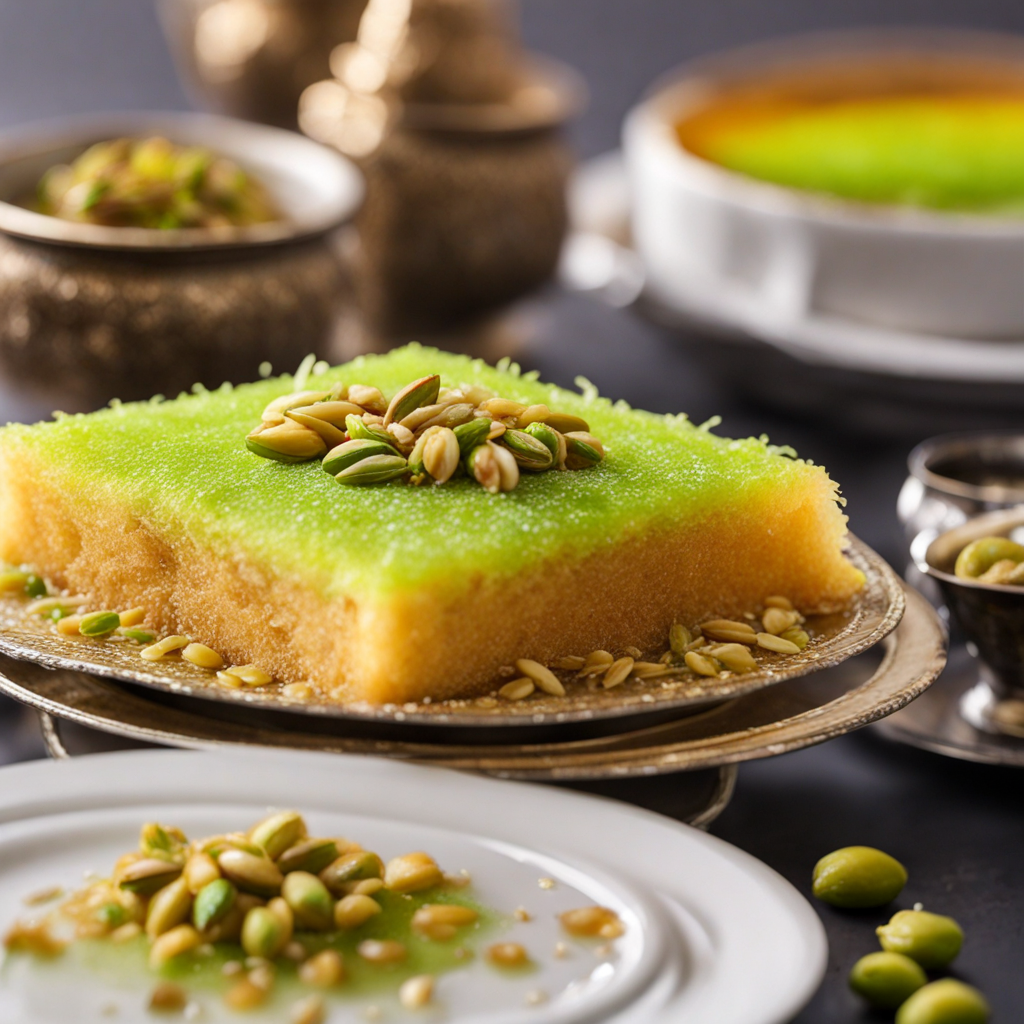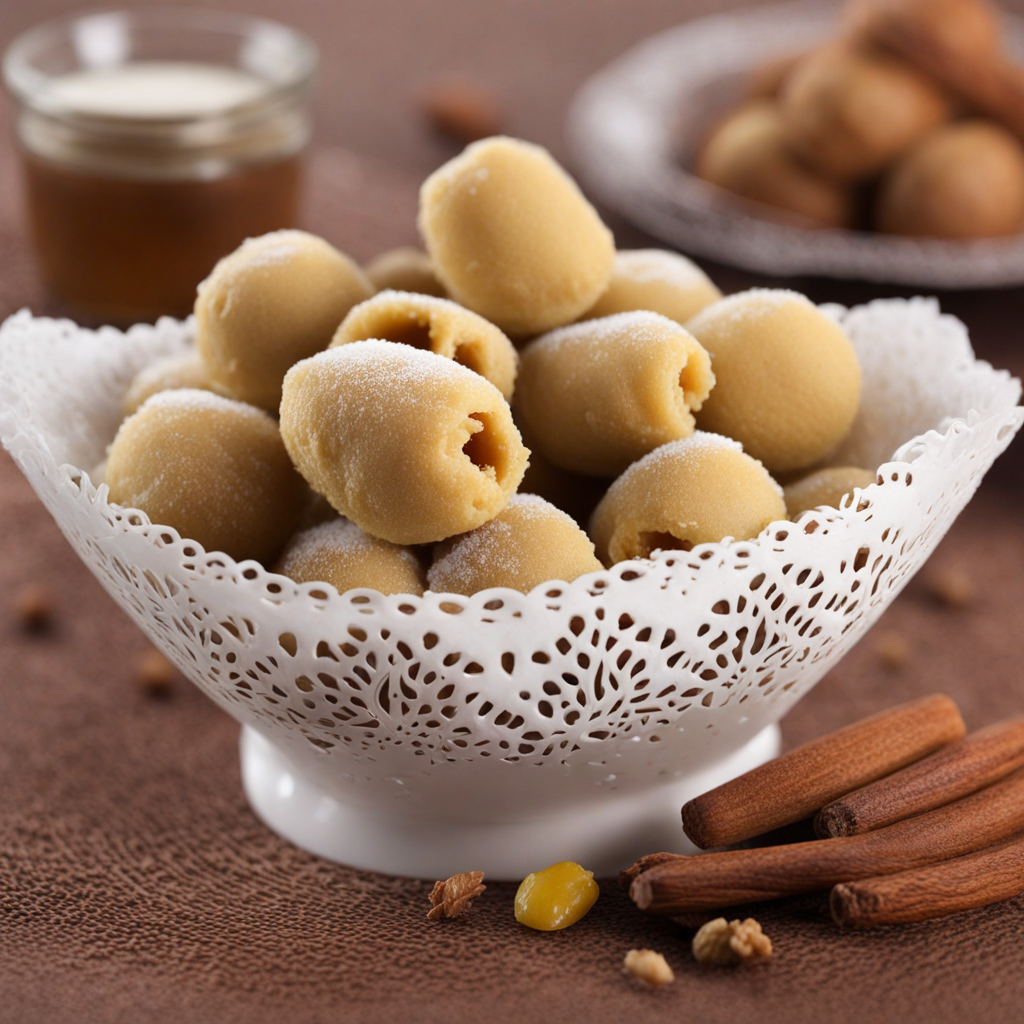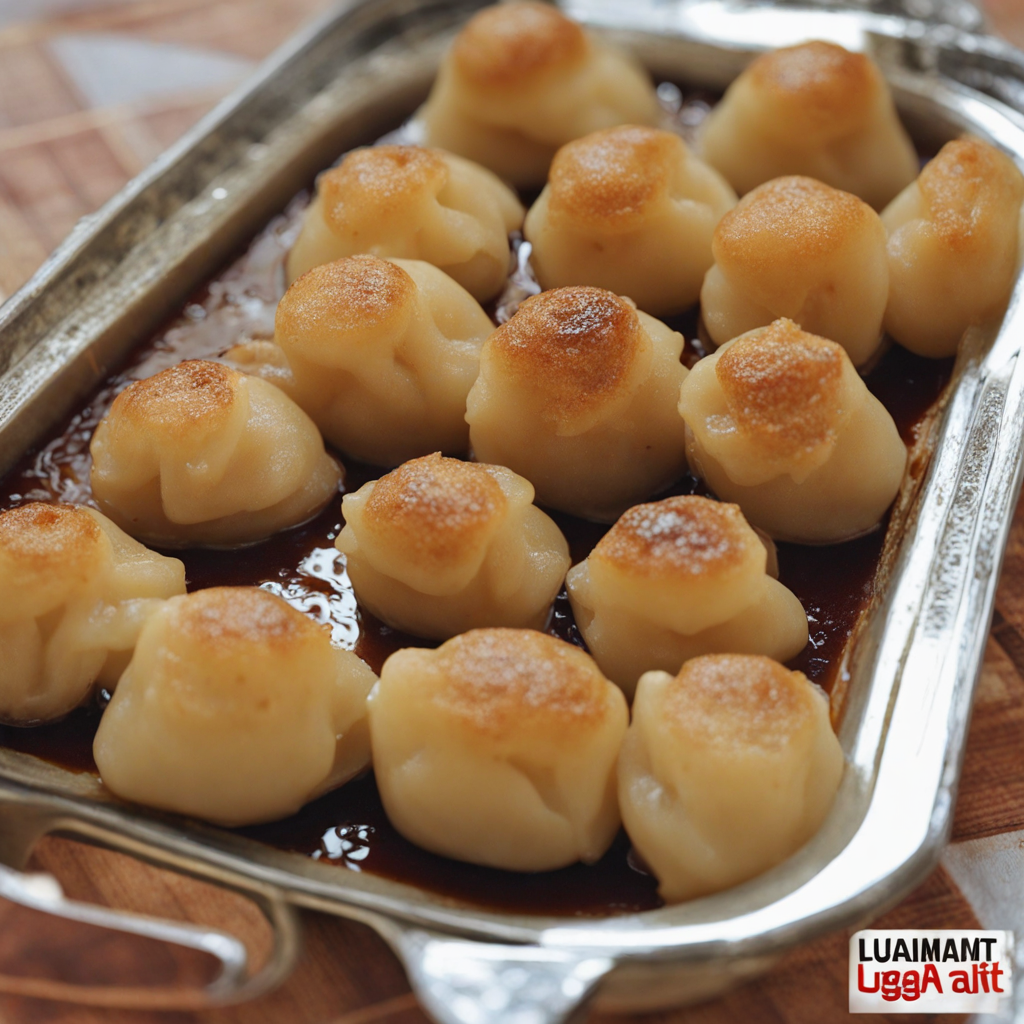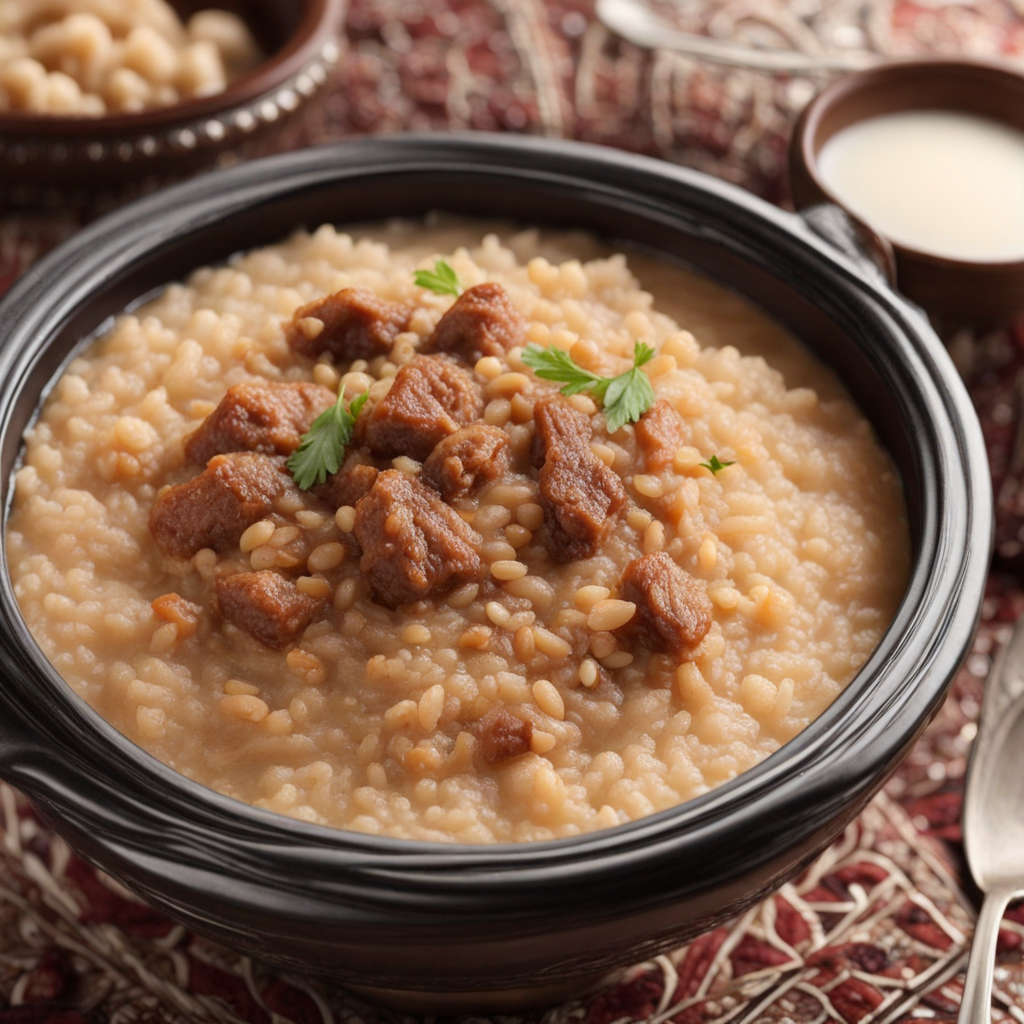Kunafa
Kunafa is a traditional Middle Eastern dessert that has captured the hearts and palates of many, especially in Kuwait. This decadent treat is made from thin, noodle-like pastry known as kataifi, which is layered with a rich filling of either sweetened cheese or a mixture of nuts, creating a delightful contrast in texture. The outer layer is typically brushed with ghee or butter, resulting in a golden, crispy crust that cradles the soft, gooey filling inside. The preparation process is both an art and a science, as achieving the perfect balance of crispiness and tenderness is key to its success. Once baked to perfection, Kunafa is generously soaked in a fragrant syrup made from sugar, water, and a hint of rose or orange blossom water, which adds an aromatic sweetness that elevates the dessert to new heights. This syrup seeps into the layers, enhancing the overall flavor and creating a luscious experience with every bite. The dish is often garnished with crushed pistachios or walnuts, providing a pop of color and an additional crunch that complements the softness of the filling. In Kuwait, Kunafa is not just a dessert; it’s a cultural staple often enjoyed during special occasions such as Ramadan, weddings, and family gatherings. The joy of sharing this sweet delight brings people together, making it a beloved symbol of hospitality. Whether enjoyed warm, fresh out of the oven, or at room temperature, Kunafa offers a unique taste journey that balances sweetness, creaminess, and a hint of nuttiness, making it a must-try for anyone looking to explore new culinary horizons.
How It Became This Dish
Origin of كنافة كنافة, known as kunafa in many parts of the Arab world, has a rich and storied history that dates back several centuries. Its origins are often attributed to the Levant region, particularly present-day Palestine and Syria. However, the dessert has permeated various cultures, including the Gulf region, particularly Kuwait, where it has been embraced wholeheartedly. The base of كنافة consists of thin noodle-like strands of dough, known as "kataifi," which are layered with a variety of fillings, often sweetened cheese or nuts, and soaked in fragrant syrup. The dish is typically baked until crispy and golden, making it a delightful treat that balances textures and flavors beautifully. The earliest mentions of كنافة can be traced to the city of Nablus, which is renowned for its specific style of kunafa. This version is characterized by its use of a creamy cheese filling that complements the sweet, syrupy crust. Over the years, the dish spread through trade routes and migration, evolving in different regions while maintaining its core components. By the time it reached the Arabian Peninsula, كنافة had already undergone various adaptations, incorporating local ingredients and preferences. \n\n Cultural Significance in Kuwait In Kuwait, كنافة is more than just a dessert; it is a cultural symbol that plays a significant role in celebrations and communal gatherings. It is often prepared during Ramadan, the holy month of fasting, where it serves as a popular iftar dish to break the fast. The sweet, rich flavors of كنافة provide a comforting experience after a day of fasting, making it a staple during this time. Families often come together to prepare the dish, passing down recipes and techniques from generation to generation, which adds to its sentimental value. The preparation of كنافة in Kuwait often involves a blend of traditional and modern techniques. While some families adhere to ancient methods passed down through their ancestors, others have adopted contemporary innovations, such as incorporating new flavors or alternative fillings. For example, some versions might include pistachios, almonds, or even chocolate, reflecting the globalization of food and the influence of international tastes on local cuisine. Furthermore, local cafes and restaurants have embraced كنافة, offering diverse interpretations that cater to both traditionalists and those seeking a modern twist. \n\n Development Over Time As Kuwait underwent significant socio-economic changes throughout the 20th century, particularly with the discovery of oil and the subsequent wealth that followed, its culinary landscape also transformed. The influx of expatriates and the blending of cultures contributed to the evolution of كنافة, introducing new ingredients and presentation styles. This fusion has led to the emergence of unique Kuwaiti variations, such as كنافة بالجبن (kunafa with cheese), which features local cheeses and is often served hot with a drizzle of syrup. The 21st century has seen كنافة gain international recognition, with Kuwaiti chefs and restaurants showcasing the dish at global food festivals and competitions. This exposure has not only elevated the status of كنافة but has also sparked interest among food enthusiasts and culinary professionals worldwide. Food bloggers and social media influencers have played a crucial role in popularizing كنافة, sharing visually appealing images and recipes that highlight its deliciousness and versatility. \n\n Modern Variations and Innovations Today, كنافة continues to evolve, embracing both traditional recipes and modern culinary trends. Innovative chefs experiment with flavors and textures, creating unique takes on this beloved dessert. Some have incorporated seasonal fruits, such as mango or berries, while others explore savory versions, using ingredients like za'atar or lamb. The introduction of health-conscious alternatives, such as gluten-free or reduced-sugar versions, reflects the changing dietary preferences of contemporary society. In Kuwait, the dessert is often served at weddings, birthdays, and other celebrations, where it is a centerpiece showcasing the host's hospitality. The act of sharing كنافة among friends and family reinforces social bonds and creates a sense of community. It is not uncommon for families to have their own secret recipes or techniques, which they guard closely, adding an element of pride and competition among home cooks. \n\n Conclusion The enduring popularity of كنافة in Kuwait is a testament to its cultural significance and adaptability over time. As both a traditional dish and a canvas for culinary creativity, كنافة reflects the rich tapestry of Kuwaiti culture and history. It stands as a delicious reminder of the region's past, bridging generations and communities through shared flavors and experiences. As the world continues to embrace globalization, this beloved dessert will likely remain a cherished staple in Kuwaiti kitchens, celebrating both its heritage and the innovations of the future.
You may like
Discover local flavors from Kuwait


